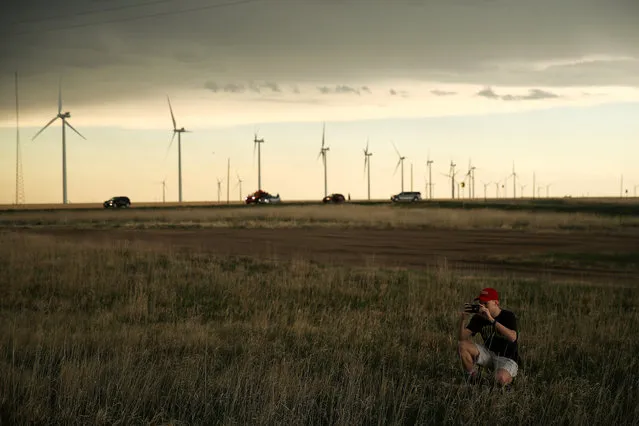
Hunter Anderson, a meteorology student at St. Cloud State University and current intern with the Center For Severe Weather Research, photographs a supercell thunderstorm during a tornado research mission, May 8, 2017 in Elbert County near Limon, Colorado. With funding from the National Science Foundation and other government grants, scientists and meteorologists from the Center for Severe Weather Research try to get close to supercell storms and tornadoes trying to better understand tornado structure and strength, how low-level winds affect and damage buildings, and to learn more about tornado formation and prediction. (Photo by Drew Angerer/Getty Images)
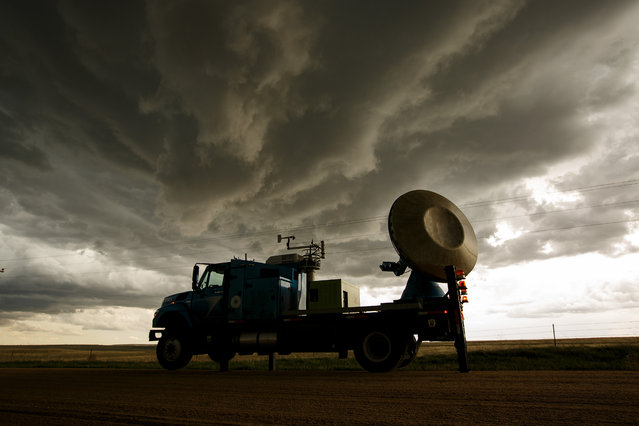
The Doppler on Wheels (DOW) vehicle scans a supercell thunderstorm during a tornado research mission, May 8, 2017 in Elbert County near Agate, Colorado. Doppler on Wheels (DOW) is a mobile doppler radar mounted on a truck that brings instruments directly into storms, allowing scientists to scan storms and tornadoes and make 3-D maps of wind and debris. (Photo by Drew Angerer/Getty Images)
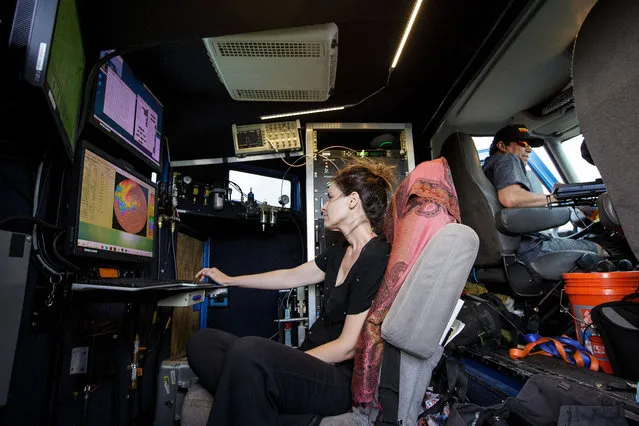
Research meteorologist Karen Kosiba monitors a supercell thunderstorm in the Doppler on Wheels (DOW) vehicle during a tornado research mission, May 9, 2017 in Portales, New Mexico. Doppler on Wheels (DOW) is a mobile doppler radar mounted on a truck that brings instruments directly into storms, allowing scientists to scan storms and tornadoes and make 3-D maps of wind and debris. Tuesday was the group's second day in the field for the 2017 tornado season for their research project titled “TWIRL”. (Photo by Drew Angerer/Getty Images)
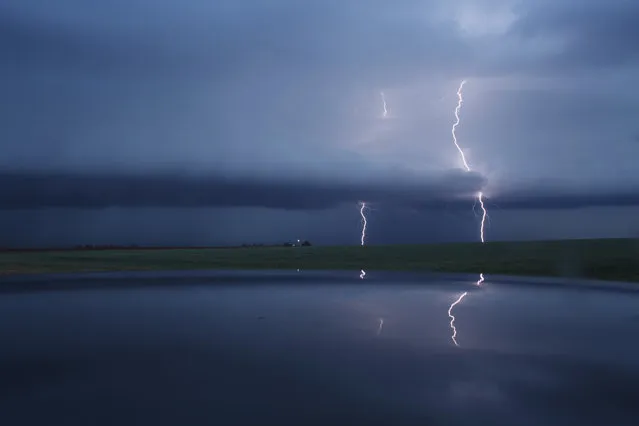
Cloud to ground lightning strikes during a supercell thunderstorm, May 9, 2017 in Lamb County, Texas. (Photo by Drew Angerer/Getty Images)
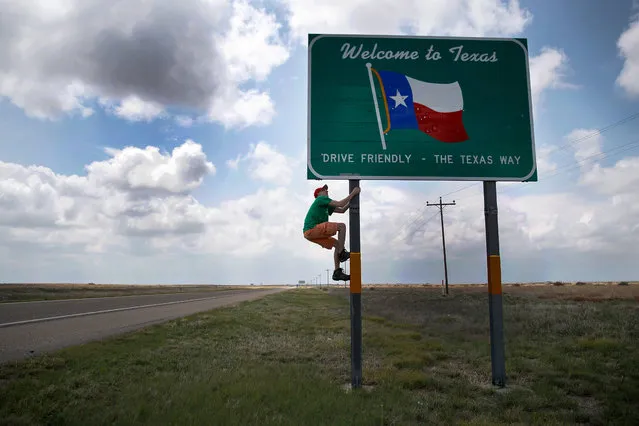
Hunter Anderson, meteorology student from St. Cloud State University and intern with the Center For Severe Weather Research, climbs a “Welcome to Texas” sign en route to a tornado research mission, May 9, 2017 near Dalhart, Texas. Tuesday was the group's second day in the field for the 2017 tornado season for their research project titled “TWIRL”. (Photo by Drew Angerer/Getty Images)
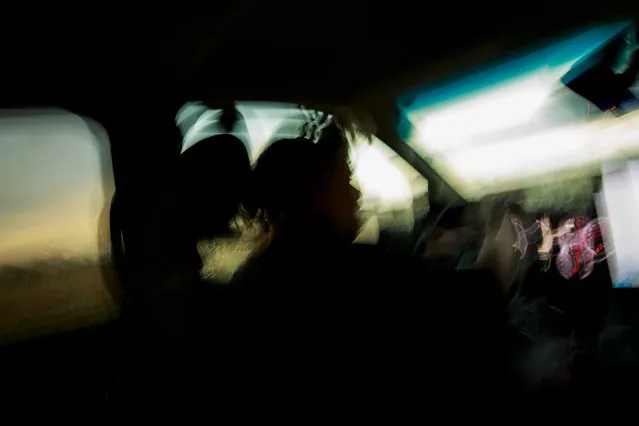
Support scientist Rachel Humphrey drives the tornado scout vehicle as they chase a supercell thunderstorm, May 9, 2017 in Lamb County, Texas. (Photo by Drew Angerer/Getty Images)
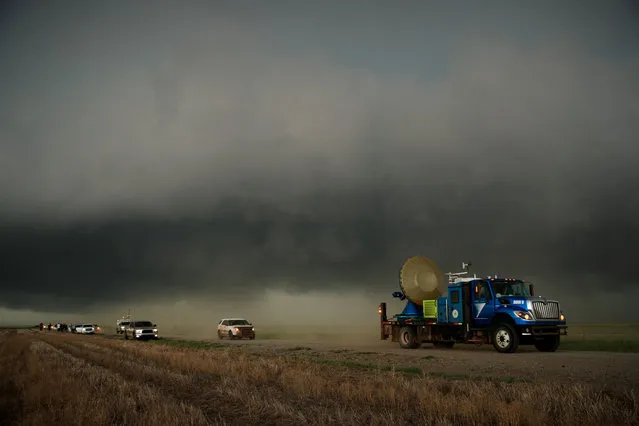
The Doppler on Wheels (DOW) vehicle arrives on the scene of a supercell thunderstorm during a tornado research mission, May 10, 2017 in Olustee, Oklahom. (Photo by Drew Angerer/Getty Images)
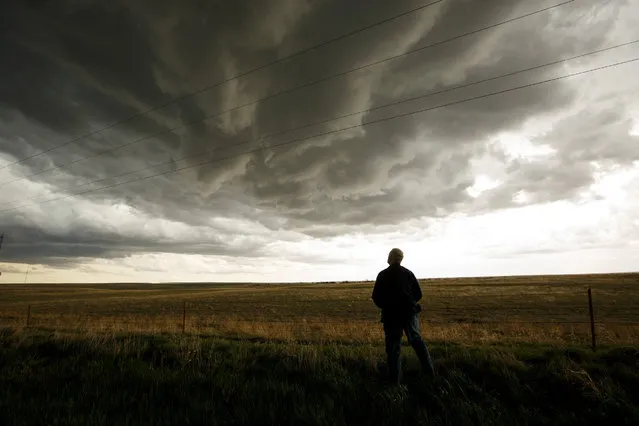
Tim Marshall, a 40 year veteran of storm chasing, monitors a supercell thunderstorm during a tornado research mission, May 8, 2017 in Elbert County near Agate, Colorado. (Photo by Drew Angerer/Getty Images)
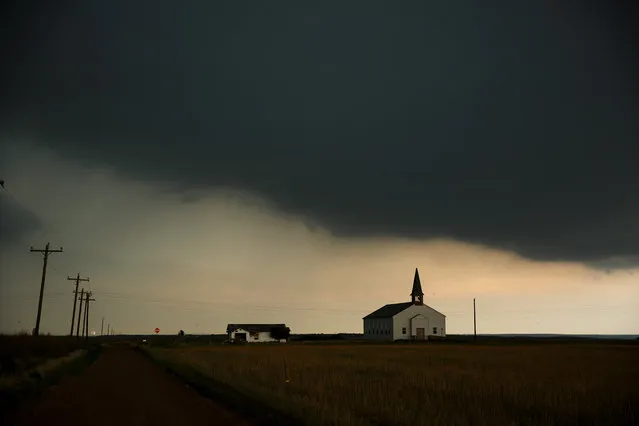
A thunderstorm rolls into the area in Paducah, Texas, May 10, 2017. Wednesday was the group's third day in the field for the 2017 tornado season for their research project titled “TWIRL”. (Photo by Drew Angerer/Getty Images)
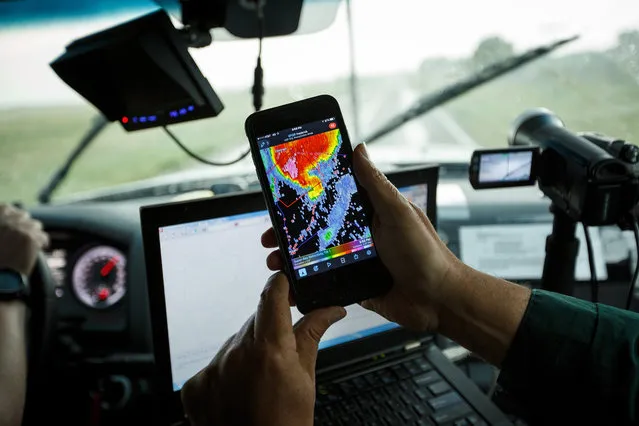
Support scientist Tim Marshall, a 40 year veteran of storm chasing, looks at radar on his smartphone as the group tracks a supercell thunderstorm, May 10, 2017 in Olustee, Oklahoma. (Photo by Drew Angerer/Getty Images)
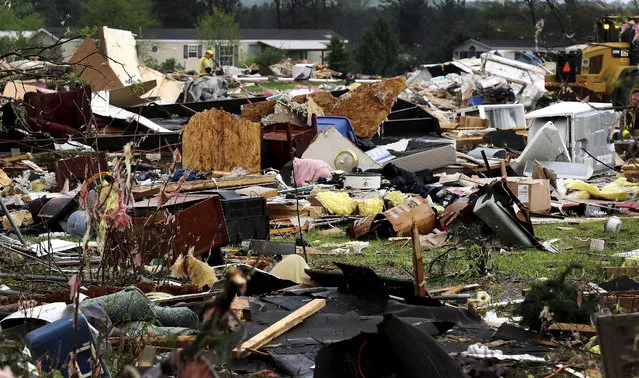
Debris from buildings and household goods scatter after a tornado ripped through Prairie Lake Estates trailer home park, just north of Chetek, Wis., Tuesday, May 16, 2017. The tornado swept into the mobile home park in western Wisconsin on Tuesday, as a storm system also pounded parts of at least seven states from Texas to near the Canadian border with heavy rain, high winds and hail. (Photo by Dan Reiland/The Eau Claire Leader-Telegram via AP Photo)
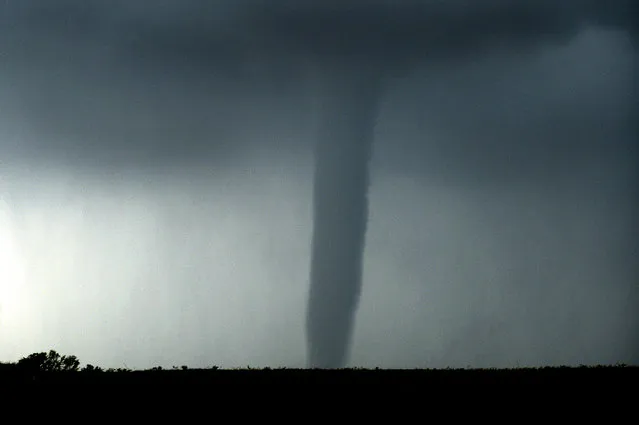
A tornado touches down south of McLean, Texas, USA, 16 May 2017. Tornados formed across the Texas panhandle and western Oklahoma, and according to media reports, thunderstorms are expected to occur in the area on and create further tornadoes and hail. (Photo by Mark Smith/EPA)
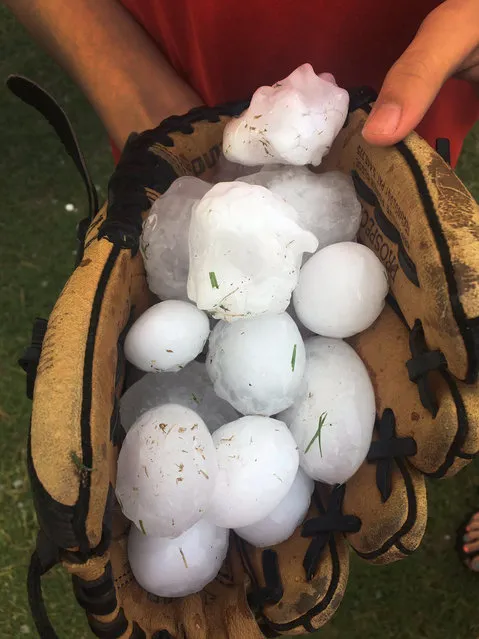
This photo provided by Stacey Valdez shows hail Valdez took in Sayre, Okla., Tuesday, May 16, 2017. Also, a tornado struck a rural area in western Oklahoma, leaving damage in its wake but no immediate reports of injuries. The storm struck a subdivision Tuesday just south of Elk City, Okla., about 110 miles west of Oklahoma City. (Photo by Stacey Valdez via AP Photo)
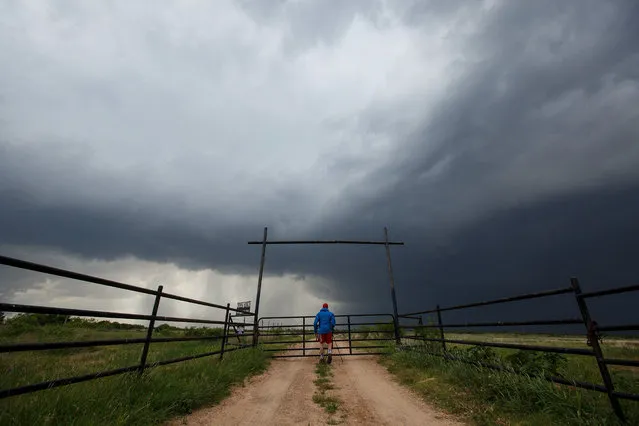
Center for Severe Weather Research intern Hunter Anderson takes photographs of a supercell thunderstorm, May 10, 2017 in Quanah, Texas. (Photo by Drew Angerer/Getty Images)
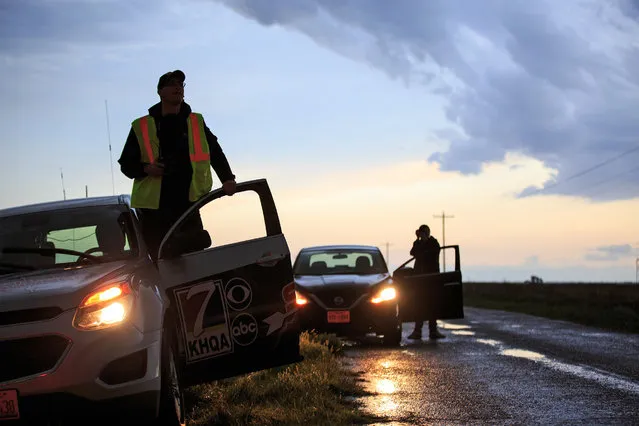
(L to R) Meteorologist Nicholas Stewart and Robin Duspara, who traveled to the U.S. from Prague and runs the Czech Thunderstorm Research Association, pull over and hop out of their cars to observe a supercell thunderstorm as it bears down on the area, May 9, 2017 in Lamb County, Texas. (Photo by Drew Angerer/Getty Images)
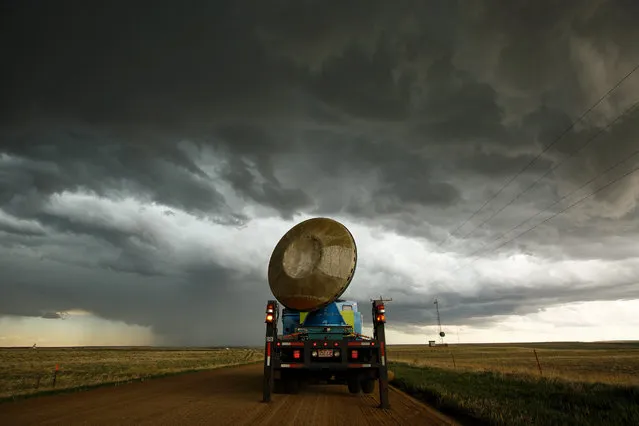
The Doppler on Wheels (DOW) vehicle scans a supercell thunderstorm during a tornado research mission, May 8, 2017 in Elbert County near Agate, Colorado. Doppler on Wheels (DOW) is a mobile doppler radar mounted on a truck that brings instruments directly into storms, allowing scientists to scan storms and tornadoes and make 3-D maps of wind and debris. With funding from the National Science Foundation and other government grants, scientists and meteorologists from the Center for Severe Weather Research try to get close to supercell storms and tornadoes trying to better understand tornado structure and strength, how low-level winds affect and damage buildings, and to learn more about tornado formation and prediction. (Photo by Drew Angerer/Getty Images)
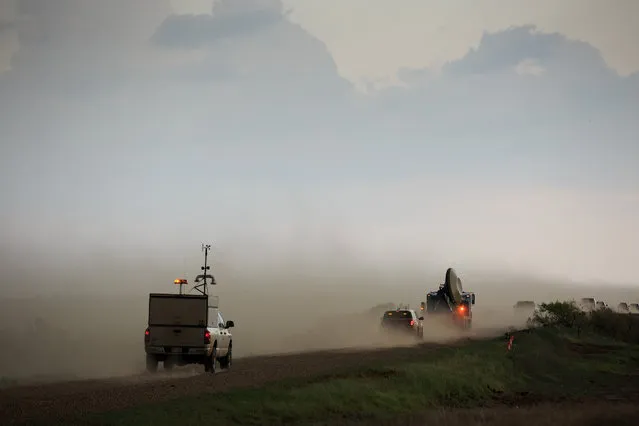
A tornado scout vehicle and the Doppler on Wheels (DOW) vehicle chase after a supercell thunderstorm during a tornado research mission, May 10, 2017 in Olustee, Oklahoma. (Photo by Drew Angerer/Getty Images)
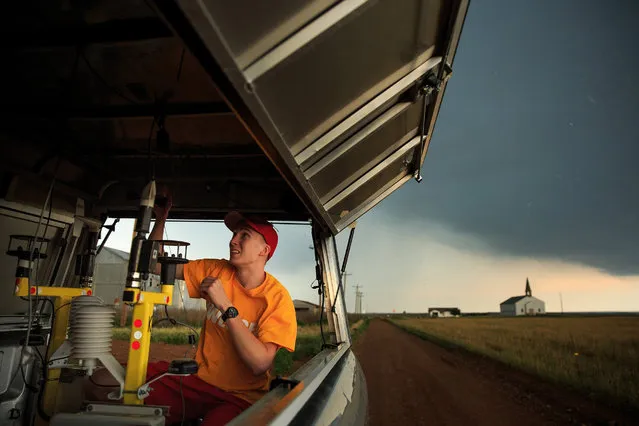
Center for Severe Weather Research intern Hunter Anderson prepares tornado pods as a severe thunderstorm moves into the area in Paducah, Texas, May 10, 2017. The storm did not produce a tornado, but the group was prepared to deploy the pods if one developed. (Photo by Drew Angerer/Getty Images)
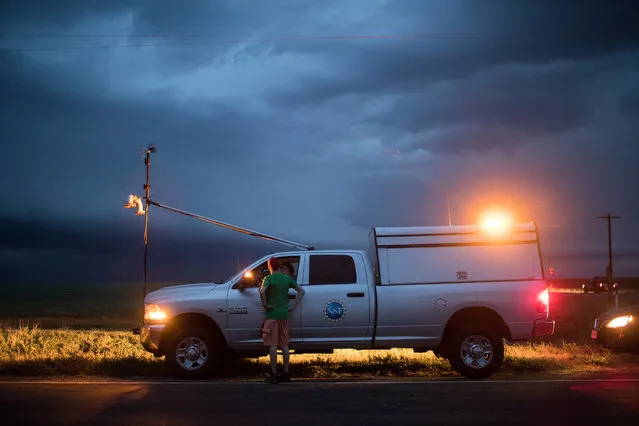
Hunter Anderson, intern with the Center For Severe Weather Research, consults with Rachel Humphrey, support scientist and driver of a tornado scout vehicle, as they observe a supercell thunderstorm as it bears down on the area, May 9, 2017 in Lamb County, Texas. (Photo by Drew Angerer/Getty Images)
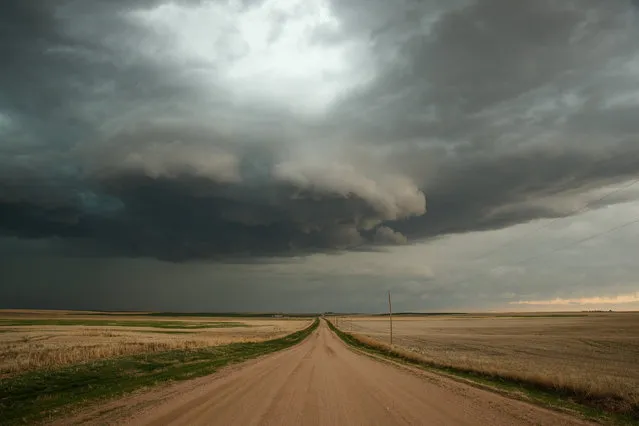
A supercell thunderstorm develops, May 8, 2017 in Elbert County outside of Limon, Colorado. (Photo by Drew Angerer/Getty Images)
18 May 2017 08:54:00,
post received
0 comments
